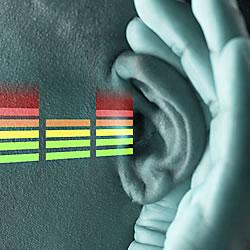Can you hear me now?
This slogan from the ubiquitous Verizon commercials reveals a deep cultural insight: Communication without understanding fails. Technology that doesn’t create cognitive connection is ultimately meaningless.
It’s not surprising that technology forges new cultural languages because it’s the medium for the message. The Gutenberg press sparked the Renaissance and the Reformation, unleashing mass communication. The mechanized clock invoked new cultural dialects of system, order, time, and space. Nearly every modern moment, philosophy, and invention for the past 500 years is rooted in these two innovations.
A cultural language is how people think and feel, speak and hear within their framework. Technology creates the mother tongue. So, we shouldn’t be surprised to witness new cultural dialects emerging.
Postmodern generations (born largely since 1961) have witnessed massive technological change. In fact, there has been more technological advancement in the past quarter-century than in the entire history of man. And yet none have radically altered the cultural language more than television and the Internet. Wireless, digital, and visual technology have created at least three new, distinct cultural languages: relational, experiential, and image.
High-Tech Hugs
Megatrends author John Naisbitt suggested over 20 years ago that high-tech culture creates high-touch expression. Tech-friendly Gen-X and Millennial generations have reinvented relationships and transformed membership. Reality television is rooted in tribes (“Survivor”), teams (“The Apprentice”), and community (“Extreme Makeover: Home Edition”). Fantasy sports, eBay, and MySpace create connective frames. The top Web hits? Porn and dating sites. Television and the Net have also initiated a global neighborhood where, in the words of Thomas Friedman, the “world is flat.”
And hungry for a hug.
Youth ministries are naturally relational, but technology opens new opportunities: Sunday School chat rooms, fantasy sport leagues, Google Earth “mission trips,” cell-phone worship, textmessage prayers. Students long to belong. In a digital world that cloaks itself in avatars and user names, finding identity and value is crucial.
Just Do It!
Television and the Net have also created an experience economy. Video gaming has birthed virtual worlds (as I write this, my kids are lost in Narnia battling evil forces). Rainforest Cafés, Disneyland, and Chuck E. Cheese restaurants market feel-good experiences. We watch Discovery, Animal Planet, and Fox Reality. Participatory shows like “American Idol” foster a karaoke culture. Emerging generations seek authentic, even extreme, spiritual moments. Biker rallies, tailgate parties, and raves are multisensory events.
Consequently, postmodern teens welcome experiential worship and teaching: simulation games, cross-cultural food fairs, online prayer labyrinths. Extreme service projects (e.g., nursing home lock-ins, shoe drives for the homeless), Eucharist celebrations, on-site Bible studies (e.g., discuss materialism at a landfill). Remodel the world into a classroom for a true extreme makeover!
Image Is Everything!
Finally, television transformed a word culture into image. Logos, branding, and artistic tattoos reflect imaginative, visual dialects. MTV single-handedly reinvented music (the prophetic “Video Killed the Radio Star” by the Buggles launched the network 25 years ago). Television and the Net married to create digital entertainment. TiVo and iPod time-shift and space-shift programming. If I say “World Trade Center,” what comes to mind? Do you see smoke? That’s the power of image. Metaphors, stories, and objects cement understanding.
Student ministries already tend to be visually cutting edge. But what about art worship? Or projected prayer requests? Temporary event tattoos? Emerging generations can visually multitask. They are comfortable with multiple fluid images. Communicators should consider video backgrounds rather than static photos.
Ultimately, television and Web technologies have forged new cultural languages. Postmoderns think, feel, and act through a relational, experiential, and
image-rich context. Creative communication will learn these dialects and connect with emerging generations.
Can you hear me now?
Good.
___________________________
Rick Chromey is an author, presenter, and professor of Youth and Family Ministry at Kentucky Christian University.




